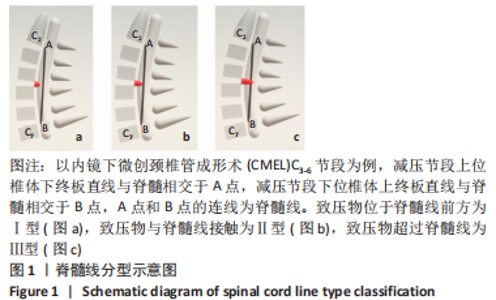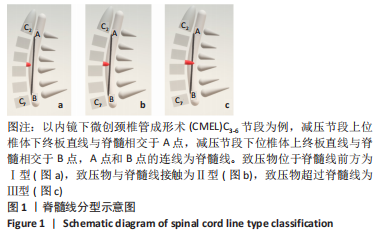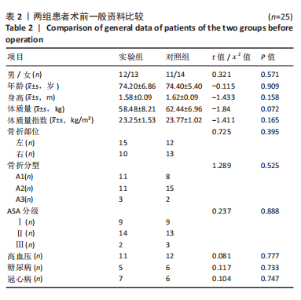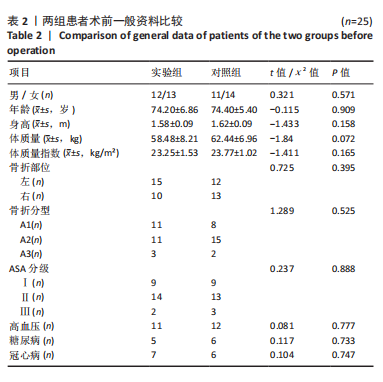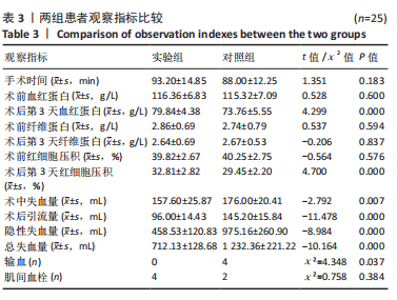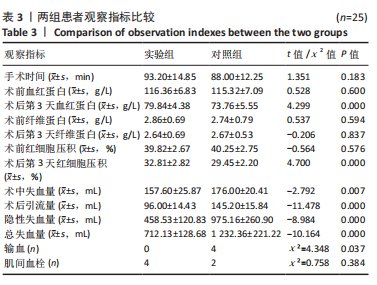[1] LEI J, ZHANG B, CONG Y, et al. Tranexamic acid reduces hidden blood loss in the treatment of intertrochanteric fractures with PFNA: a single-center randomized controlled trial. J Orthop Surg Res. 2017;12(1):124.
[2] ZANG W, LIU PF,HAN XF. A comparative study of proximal femoral locking compress plate, proximal femoral nail antirotation and dynamic hip screw in intertrochanteric fractures. Eur Rev Med Pharmacol Sci. 2018;22(1 Suppl):119-123.
[3] PETIS S, HOWARD JL, LANTING BL, et al. Surgical approach in primary total hip arthroplasty: anatomy, technique and clinical outcomes. Can J Surg. 2015;58(2):128-139.
[4] SIMAN H, KAMATH AF, CARRILLO N, et al. Unicompartmental Knee Arthroplasty vs Total Knee Arthroplasty for Medial Compartment Arthritis in Patients Older Than 75 Years: Comparable Reoperation, Revision, and Complication Rates. J Arthroplasty. 2017;32(6):1792-1797.
[5] KARAKUS O, OZDEMIR G, KARACA S, et al. The relationship between the type of unstable intertrochanteric femur fracture and mobility in the elderly. J Orthop Surg Res. 2018;13(1):207.
[6] ZHANG R, YANG Z, LEI T, et al. Effects of aminocaproic acid on perioperative hidden blood loss in elderly patients with femoral intertrochanteric fracture treated with proximal femoral nail anti-rotation. J Int Med Res. 2019;47(10):5010-5018.
[7] TIAN S, LI H, LIU M, et al. Dynamic Analysis of Perioperative Hidden Blood Loss in Intertrochanteric Fractures. Clin Appl Thromb Hemost. 2019;25:1076029618823279.
[8] STACEY J, BUSH C,DIPASQUALE T. The hidden blood loss in proximal femur fractures is sizeable and significant. J Clin Orthop Trauma. 2021; 16:239-243.
[9] ZHENG H, ZHANG Y, WANG H, et al. Comparison of perioperative hidden blood loss for intertrochanteric fractures in the elderly by different intramedullary fixations: A randomized controlled study protocol. Medicine (Baltimore). 2020;99(48):e21666.
[10] GOLDSTEIN M, FELDMANN C, WULF H, et al. Tranexamic Acid Prophylaxis in Hip and Knee Joint Replacement. Dtsch Arztebl Int. 2017;114(48):824-830.
[11] POERAN J, CHAN JJ, ZUBIZARRETA N, et al. Safety of Tranexamic Acid in Hip and Knee Arthroplasty in High-risk Patients. Anesthesiology. 2021;135(1):57-68.
[12] ASHKENAZI I, SCHERMANN H, GOLD A, et al. Tranexamic acid in hip hemiarthroplasty. Injury. 2020;51(11):2658-2662.
[13] KIMURA OS, FREITAS EH, DUARTE ME, et al. Tranexamic acid use in high-risk blood transfusion patients undergoing total hip replacement: a randomised controlled trial. Hip Int. 2021;31(4):456-464.
[14] GROSS JB. Estimating allowable blood loss: corrected for dilution. Anesthesiology. 1983;58(3):277-280.
[15] NADLER SB, HIDALGO JH, BLOCH T. Prediction of blood volume in normal human adults. Surgery. 1962;51(2):224-232.
[16] WEI H, XIAO Q, HE J, et al. Effect and safety of topical application of tranexamic acid to reduce perioperative blood loss in elderly patients with intertrochanteric fracture undergoing PFNA. Medicine (Baltimore). 2021;100(34):e27123.
[17] TIAN S, SHEN Z, LIU Y, et al. The effect of tranexamic acid on hidden bleeding in older intertrochanteric fracture patients treated with PFNA. Injury. 2018;49(3):680-684.
[18] ZHU Q, YU C, CHEN X, et al. Efficacy and Safety of Tranexamic Acid for Blood Salvage in Intertrochanteric Fracture Surgery: A Meta-Analysis. Clin Appl Thromb Hemost. 2018;24(8):1189-1198.
[19] YU X, WANG J, WANG X, et al. The efficacy and safety of tranexamic acid in the treatment of intertrochanteric fracture: an updated meta-analysis of 11 randomized controlled trials. J Thromb Thrombolysis. 2020;50(2):243-257.
[20] ZHOU X D, ZHANG Y, JIANG L F, et al. Efficacy and Safety of Tranexamic Acid in Intertrochanteric Fractures: A Single-Blind Randomized Controlled Trial. Orthop Surg. 2019;11(4):635-642.
[21] CHEN F, JIANG Z, LI M, et al. Efficacy and safety of perioperative tranexamic acid in elderly patients undergoing trochanteric fracture surgery: a randomised controlled trial. Hong Kong Med J. 2019;25(2): 120-126.
|
